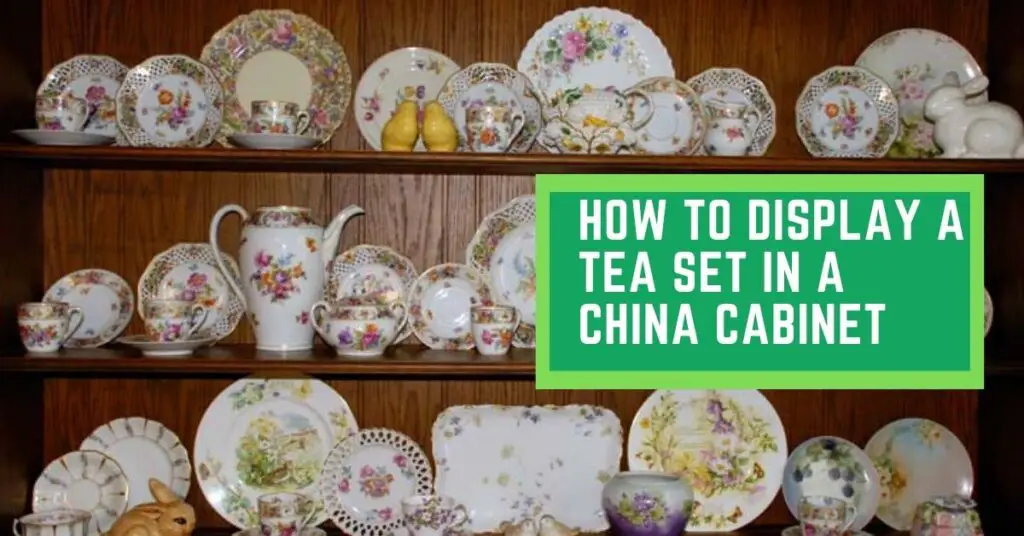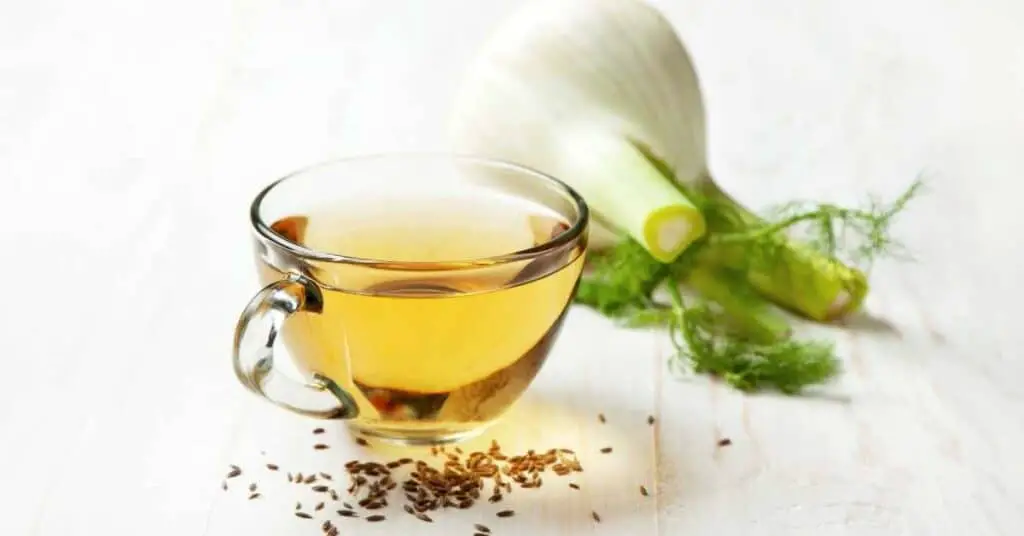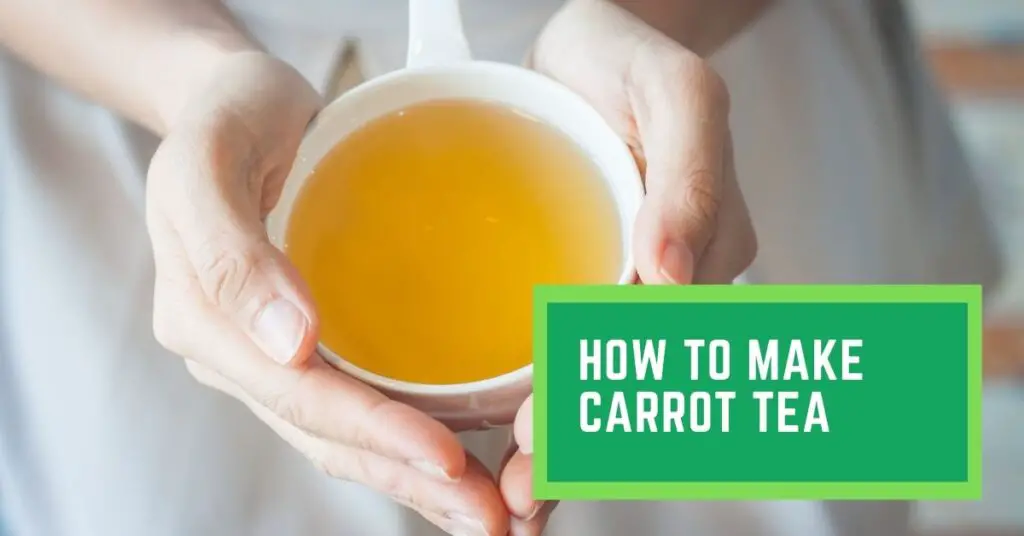Welcome to a world where tea transcends mere refreshment, becoming an art form unto itself. In this enchanting journey, we’ll unravel the mesmerizing process of hand-rolling artisanal tea leaves.
From the moment of plucking to the final unfurling of your cup, every step is a testament to human skill and tradition. These leaves, carefully nurtured and lovingly crafted, hold the essence of generations past.
Join us as we delve into the heart of tea-making, exploring the nuances that transform a simple leaf into a sensory masterpiece. Get ready to be captivated by the artistry, history, and flavors that await!
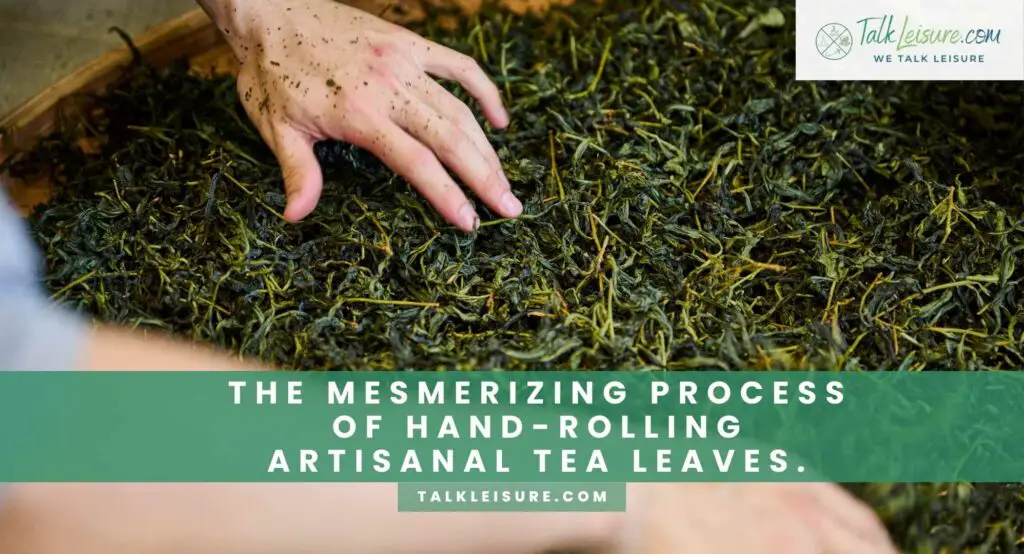
Introduction to Artisanal Tea Rolling
Alright, tea enthusiasts and curious minds, gather ’round because we’re about to embark on a journey through the world of artisanal tea rolling – a mesmerizing dance of leaves, tradition, and pure craftsmanship.
Defining Artisanal Tea
Now, I know what you’re thinking. “Artisanal”? It’s not just a fancy word for “fancy”. It’s the real deal! Artisanal tea is the gold standard of tea craftsmanship. It’s the Mona Lisa of the tea world. Think of it as the painstakingly hand-painted masterpiece in a world full of printouts.
The Significance of Hand-Rolling
Why go through all this trouble, you ask? Well, my tea-loving friend, hand-rolling is where the magic happens. It’s a centuries-old technique that transforms ordinary tea leaves into something extraordinary. This manual process imparts a level of care and attention that no machine can match. It’s like a warm hug from the tea gods themselves.
Historical Roots of Hand-Rolled Tea
Let’s take a trip down memory lane, shall we? Hand-rolling isn’t some newfangled trend. Nope, it’s a tradition steeped in history (pun very much intended). Ancient tea masters perfected this art form, passing down their secrets through the ages.
We’re talking about techniques that have stood the test of time, creating teas that are as rich in heritage as they are in flavor.
So, my fellow tea adventurers, get ready to unravel the mysteries and marvels of hand-rolling. We’re about to step into a world where each tea leaf is treated like royalty, and every cup tells a tale. Get your cups ready, because this journey is about to get seriously steeped!
Selecting the Finest Tea Leaves

Ah, my discerning tea connoisseurs, welcome to the heart of our artisanal adventure: the quest for the choicest tea leaves. It’s time to don your imaginary tea explorer hats and embark on a journey to discover leaves that are nothing short of spectacular.
The Importance of Quality Leaves
Let’s get one thing straight – great tea starts with great leaves. We’re not talking about any old wilted greens here. We’re after the cream of the crop, the top of the leafy pyramid. These leaves are plucked with the precision of a surgeon and the care of a doting parent.
Regions Known for Exceptional Tea Production
Picture rolling hills shrouded in mist, and you’re probably thinking of the very places where our tea adventure begins. From the misty mountains of China to the lush gardens of India, these regions have mastered the art of nurturing tea leaves that are destined for greatness.
Harvesting Techniques for Artisanal Tea
Ever wondered how those leaves go from bush to brew? Well, it’s all in the harvest. Hand-plucking, my friends, is the name of the game.
Skilled pickers delicately select each leaf, ensuring only the most tender and vibrant ones make the cut. It’s a bit like casting for a movie, but with tea leaves instead of actors.
So, dear readers, prepare to be transported to the very fields where these magical leaves are born. We’re about to witness the meticulous process that sets the stage for our hand-rolling extravaganza.
Grab your binoculars (okay, maybe just your reading glasses), because the adventure has only just begun!
Withering: The Initial Step
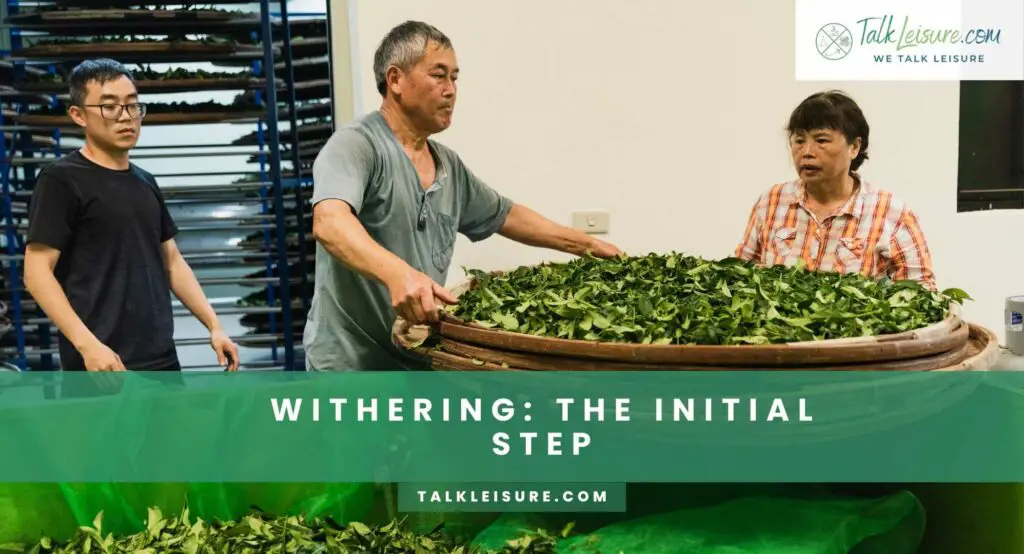
Alright, my fellow tea enthusiasts, buckle up because we’re about to dive headfirst into a crucial phase of our tea adventure: withering. No, we’re not talking about plants sadly drooping after a lack of water. This is a controlled, purposeful process that sets the stage for something truly extraordinary.
Purpose of Withering
Think of withering as a bit of a spa day for our freshly plucked tea leaves. It’s here that they get to relax, unwind, and let go of some of their excess moisture.
This step is crucial because it kickstarts the oxidation process, paving the way for the development of those complex flavors we all know and love.
Natural vs. Controlled Withering
Now, here’s where things get interesting. Some teas prefer a more hands-off, let-nature-do-its-thing approach. They’re spread out under the open sky, absorbing the subtle nuances of the environment. Others, however, are a bit more high-maintenance. They demand carefully controlled conditions, like a temperamental artist in a climate-controlled studio.
Environmental Factors Influencing Withering
From the gentle caress of a breeze to the kiss of sunlight filtering through the leaves, every aspect of the environment plays a role in this process. Temperature, humidity, and airflow—they’re all part of the delicate dance that transforms these leaves from vibrant green to the rich, nuanced shades that signify the start of something truly special.
So, dear readers, picture these leaves in their moment of serenity, basking in the tender care of withering. It’s a delicate dance of nature and nurture, setting the stage for the grand performance that lies ahead. Get ready, because things are about to get even more fascinating!
Fixing: Halting Oxidation
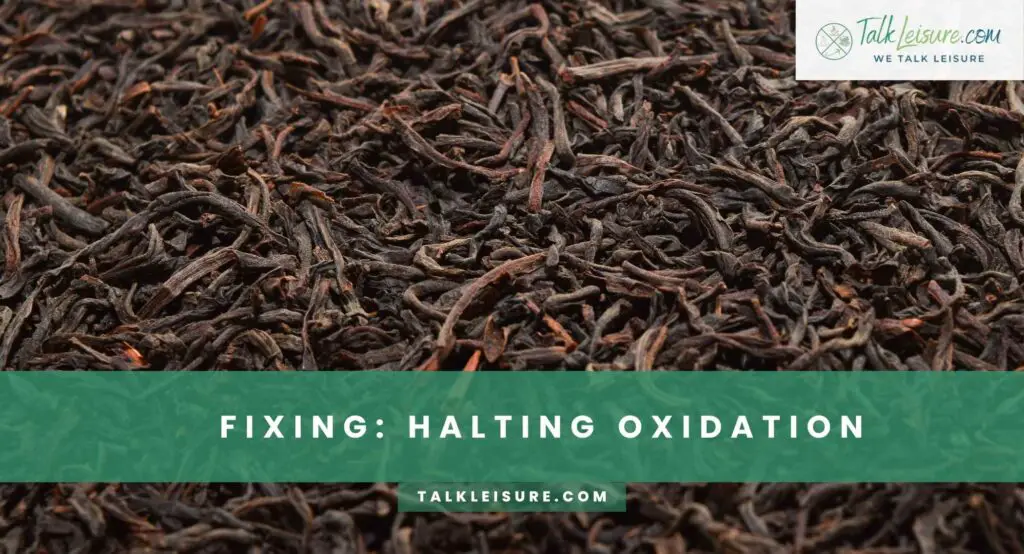
Ah, fixating on fixing – it might sound a bit obsessive, but trust me, this step is pivotal in the tea-making process. We’re about to dive into a world where oxidation is both a foe and a friend, and where the magic of tea truly takes shape.
Understanding Oxidation in Tea
Now, don’t let the word “oxidation” scare you off. It’s not some dark magic; it’s a natural chemical process. Think of it like a tea leaf’s version of aging gracefully. Oxidation brings out the intricate flavors and aromas that make each variety of tea so unique.
Traditional Fixing Techniques
Fixing is where we throw a bit of a curveball at Mother Nature. We’re going to halt the oxidation process in its tracks. How? Through a series of carefully orchestrated steps that vary from tea to tea. Some prefer a hot steamy embrace, while others might opt for a more sizzling affair in a dry heat. It’s like a spa day, but with a touch of science.
Innovations in Fixing Methods
Now, here’s where things get exciting. Tea artisans are a creative bunch, always finding new and innovative ways to fix their precious leaves. From experimenting with different temperatures to exploring unique methods, there’s a whole world of possibilities out there. It’s like tea-making meets cutting-edge technology, resulting in flavors that’ll make your taste buds do a happy dance.
So, dear readers, prepare to witness the magical moment when oxidation takes a pause, allowing the true essence of the tea to shine through. Fixing is where the alchemy happens, turning humble leaves into liquid gold. Get ready, because the best is yet to come!
Rolling: The Heart of Artisanal Tea Making
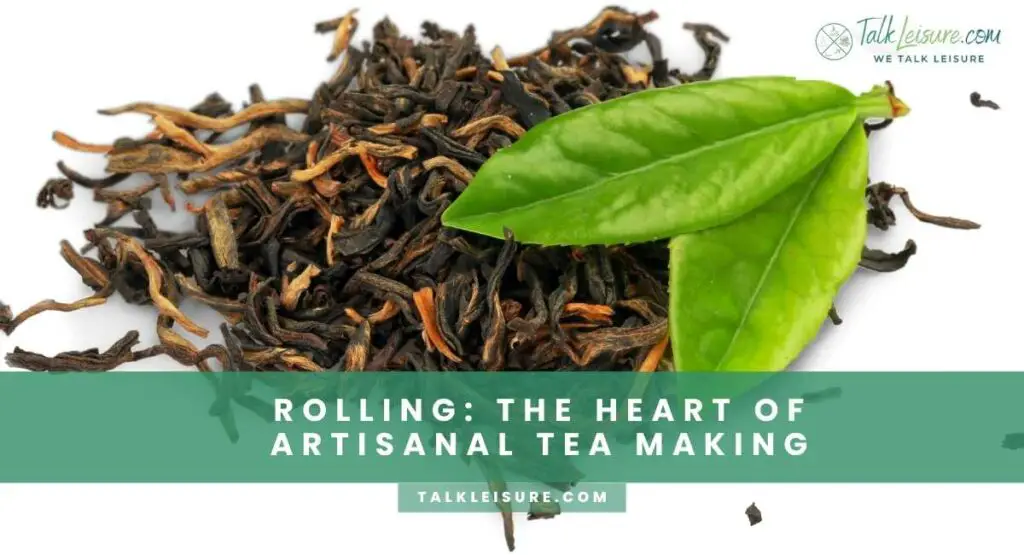
Alright, tea enthusiasts, here’s where the real hands-on action begins. Get ready to witness the artistry of tea rolling – a process that takes a gentle touch, a keen eye, and a whole lot of heart.
Hand-Rolling vs. Machine-Rolling
Picture this: a tea master gently cradling a handful of leaves, carefully coaxing them into shape. That, my friends, is hand-rolling. It’s a dance of finesse and precision, where every movement is a testament to the skill of the artisan. Machine-rolling? Well, it’s a bit like letting a robot handle your delicate china – efficient, yes, but it lacks that human touch.
Skill and Precision Required
Hand-rolling isn’t for the faint of heart. It’s a craft that demands years of practice and a deep understanding of the tea leaves.
The artisan must know exactly how much pressure to apply and how many twists and turns to execute, all while ensuring the leaves maintain their integrity.
It’s a bit like crafting a delicate piece of jewelry, where every touch matter.
Impact on Tea Aroma and Flavor
Now, here’s the exciting part. The way these leaves are rolled has a direct impact on the final flavor and aroma of the tea. A tight roll might result in a more concentrated, robust flavor, while a looser roll can lead to a lighter, more delicate profile. It’s like a tea symphony, where every note (or in this case, every roll) contributes to the masterpiece.
So, dear readers, imagine standing in the presence of a true tea maestro, witnessing the intricate ballet of hand-rolling. It’s a process that transforms leaves into something truly extraordinary. Get ready, because we’re about to unveil the next act in this mesmerizing tea-making journey!
Shaping and Forming the Tea Leaves
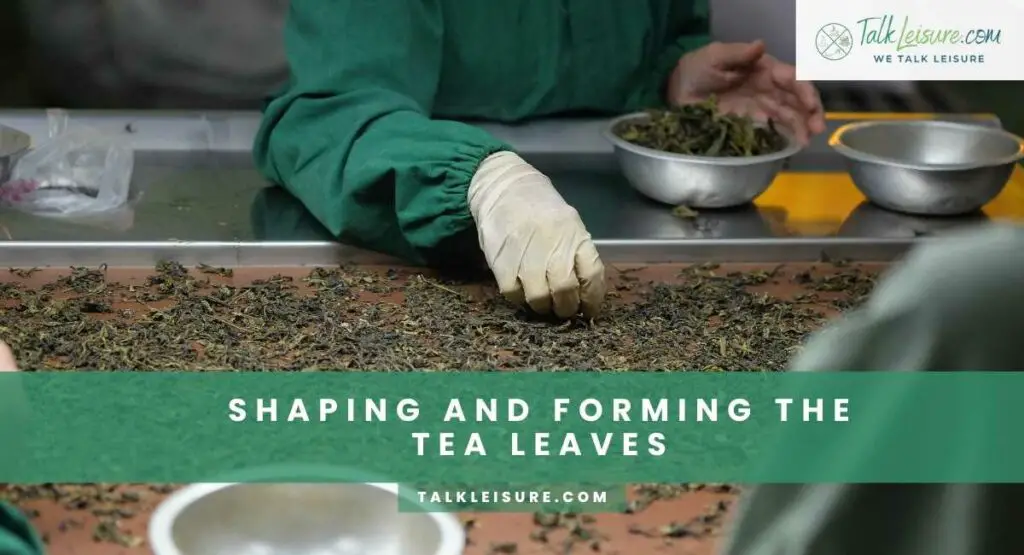
Ladies and gentlemen, we’ve entered the sculptor’s studio of the tea world. Welcome to the phase where tea leaves become more than just leaves – they become works of art, each with its own unique personality and character.
Shaping Techniques in Hand-Rolling
Imagine a tea artisan as a sculptor, molding clay into intricate shapes. In this case, our clay is the pliable tea leaf. The artisan uses their skilled hands to coax and encourage the leaves into forms that are both visually stunning and crucial for the brewing process. Spirals, pearls, or even artistic twists – it’s all part of the tea-shaping magic.
Artistic Aspects of Shaping
Just like a sculptor brings life to their creations, a tea artisan breathes life into these leaves. The way they shape the tea isn’t just for aesthetics; it’s also for functionality. Certain shapes allow for a more even infusion of flavors during brewing, ensuring that each sip is a symphony of taste.
The Influence of Shape on Brewing
You’d be amazed at how much the shape of a tea leaf can influence your cuppa. A tightly rolled leaf might unfold slowly, revealing layers of flavor with each steep. On the other hand, a more open shape might release its essence more readily. It’s like different instruments in an orchestra – each one plays its part in creating a harmonious brew.
So, dear readers, picture yourself in the midst of this tea-shaping spectacle. It’s a dance of creativity and technique, where leaves are transformed into something truly exceptional. Get ready, because the stage is set for a brewing experience like no other!
Drying and Final Processing
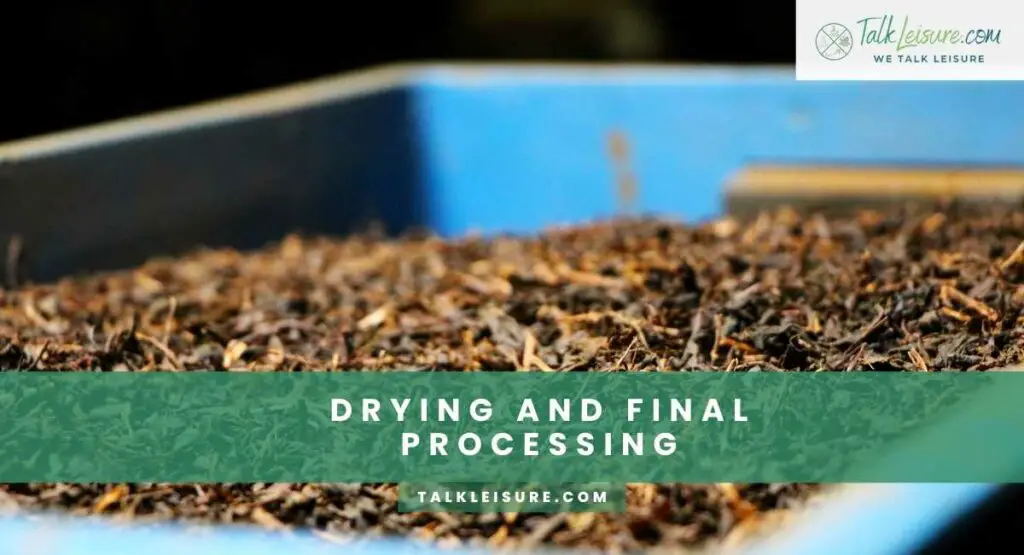
Alright, fellow tea adventurers, we’re in the homestretch now! We’ve witnessed the leaves at their freshest, seen them wither, and marveled at the art of rolling and shaping. Now, it’s time to give our tea leaves their final flourish.
Ensuring Proper Moisture Levels
After all that rolling and shaping, our tea leaves need a breather. They head to the drying room, where carefully controlled conditions help them shed any excess moisture. It’s like a spa day, but for tea. This step is crucial because it sets the stage for storage and ensures the leaves stay in top-notch condition.
Final Touches to Enhance Flavor
This is where the tea artisan’s expertise truly shines. They might add an extra twist to the process, perhaps roasting the leaves to impart a hint of smokiness or to bring out certain nuanced flavors. It’s like adding the finishing touches to a masterpiece – a stroke of genius that elevates the entire composition.
Preservation Techniques for Hand-Rolled Tea
We’re all about making sure our tea stays as fresh as the day it was crafted. The final processed leaves are carefully stored in a way that protects their delicate flavors. Whether it’s sealing them in airtight containers or wrapping them in special paper, every precaution is taken to ensure your cuppa is a sensory delight.
So, dear readers, imagine standing at the threshold of the final stage, where tea leaves undergo their last transformation. It’s a process that ensures the flavors are locked in, ready to unfurl in your cup. Get ready, because the grand finale of our tea-making journey is just around the corner!
The Artistry Behind Hand-Rolled Tea
Ladies and gentlemen, we’ve arrived at the heart of our tea odyssey – the celebration of true craftsmanship. Prepare to be enchanted by the dedication, skill, and passion that go into creating these hand-rolled masterpieces.
Craftsmanship of Tea Masters
Behind every batch of hand-rolled tea is a master, a maestro of leaves. These artisans have dedicated years, if not decades, to honing their craft. Their hands move with a grace and precision that only comes from an intimate understanding of their medium.
They’re the unsung heroes of the tea world, and their artistry is what elevates a simple leaf to a transcendent experience.
Preserving Tradition in a Modern World
In a world of mass production and automation, these tea masters stand as guardians of tradition. They resist the urge to take shortcuts, holding fast to techniques passed down through generations. It’s a testament to their dedication to preserving the essence of tea-making, ensuring that every cup carries with it a piece of history.
The Value of Handmade Tea in Today’s Market
In a world flooded with convenience, hand-rolled tea stands as a beacon of quality and authenticity. It’s not just a beverage; it’s a testament to the human touch. The value of hand-rolled tea goes beyond its flavor; it’s an experience, a connection to a legacy of artisans who pour their heart and soul into every batch.
So, dear readers, envision the hands of a tea master, moving with a rhythm that only comes from years of practice. It’s a dance of dedication, a symphony of skill, and it’s what sets hand-rolled tea apart. Get ready, because the culmination of this journey is a cup of tea that’s nothing short of extraordinary!
Unique Varieties of Hand-Rolled Teas
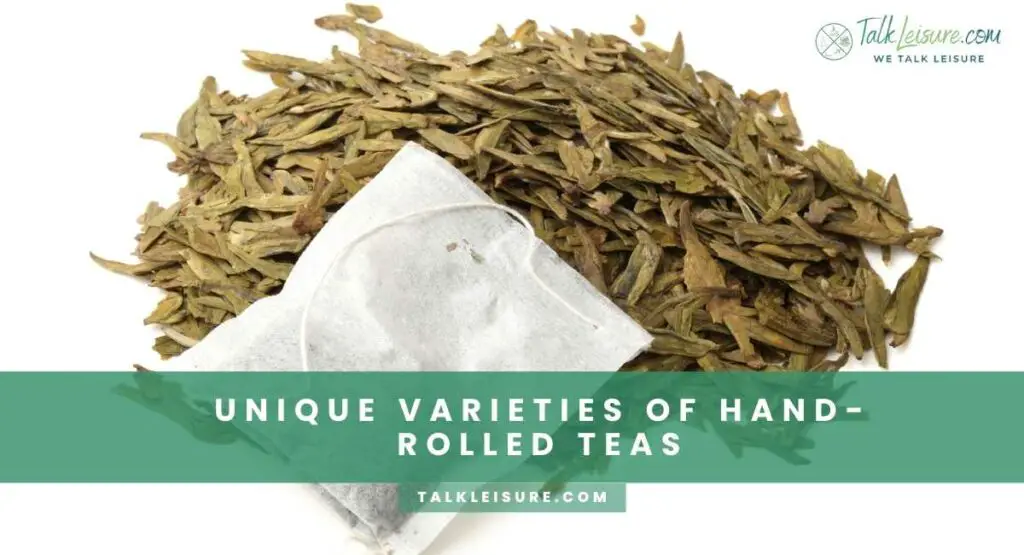
Dear tea explorers, we’re about to step into a world of diverse flavors, each as distinctive as a fingerprint. These hand-rolled teas are not just beverages; they’re expressions of the regions they hail from, the artisans who craft them, and the traditions they carry forward.
Famous Varieties and Their Characteristics
From the delicate spirals of Dragonwell to the tightly wound pearls of Jasmine, each variety of hand-rolled tea has its own story to tell. We’ll embark on a tasting tour, exploring the nuances that set them apart. Prepare for a journey of the senses, where every sip reveals a new layer of complexity.
Specialty Teas from Different Cultures
Tea isn’t confined by borders; it’s a global language. We’ll traverse continents, from the misty mountains of Japan to the sun-drenched fields of Taiwan. Each culture brings its own unique twist to the art of hand-rolling, resulting in teas that are as diverse as the landscapes they call home.
Exploring Lesser-Known Artisanal Teas
Hidden gems are waiting to be discovered, and they’re not always in the limelight. We’ll uncover teas that might not have graced the glossy pages of magazines but possess a charm and character that’s truly captivating. These teas are a testament to the richness of the world of hand-rolling.
So, dear readers, get ready to embark on a journey of discovery. We’re about to explore teas that are as unique and varied as the cultures that produce them. From the well-known to the hidden treasures, each one is a testament to the artistry and diversity of hand-rolled teas. Get ready to savor the world in a cup!
Brewing and Enjoying Hand-Rolled Tea
Alright, my fellow tea aficionados, we’ve come to the moment of truth – brewing and savoring our hand-rolled treasures. It’s not just about making a cup of tea; it’s about orchestrating a sensory experience that’s nothing short of magical.
Proper Brewing Techniques
First things first, we need to treat these hand-rolled leaves with the respect they deserve. Brewing is an art in itself, and it starts with water that’s just right – not too hot, not too cold. We’ll explore the delicate dance of water temperature, steeping time, and leaf-to-water ratio. Get ready to become a tea maestro in your own right!
Savoring the Aroma and Flavor
As the leaves unfurl and release their essence, prepare to be captivated by the dance of aromas that fills the air. Each variety has its own unique bouquet, ranging from floral and fruity to earthy and smoky. Take a moment to inhale deeply and let the scent transport you to the very fields where these leaves were born.
Pairing Hand-Rolled Tea with Culinary Delights
Tea isn’t just a drink; it’s a companion to good food. We’ll explore the art of pairing hand-rolled teas with a variety of culinary delights. Whether it’s delicate white tea with a light salad or a robust black tea alongside a hearty stew, the right pairing can elevate both the tea and the meal to new heights.
So, dear readers, prepare to become tea maestros in your own right. We’re about to dive into the world of brewing and savoring, where every sip is a symphony of flavor and aroma. Get ready to indulge your senses in a tea experience that’s nothing short of extraordinary!
Conclusion
Ladies and gentlemen, tea enthusiasts, and curious minds, we’ve journeyed through the mesmerizing world of hand-rolled artisanal tea leaves. From the delicate plucking to the artful rolling, we’ve witnessed the craftsmanship that transforms leaves into liquid gold.
Appreciating the Craftsmanship
As we conclude this odyssey, let’s take a moment to salute the artisans whose hands and hearts have shaped these leaves. Their dedication, passed down through generations, is what breathes life into every cup. It’s a legacy that deserves our deepest admiration.
Inviting Readers to Experience Hand-Rolled Tea
I encourage each of you to embark on your own tea adventure. Seek out hand-rolled teas, and with each sip, take a moment to appreciate the labor of love that went into crafting it. Let the flavors and aromas transport you to the very fields where these leaves were nurtured.
Preserving a Rich Tradition
In a world that often rushes by, hand-rolling tea stands as a beacon of tradition and artistry. It’s a reminder that some things are best done with care, patience, and a touch of human magic. As you enjoy your hand-rolled cup, know that you’re not just tasting tea – you’re tasting history.
So, dear readers, let’s raise our cups to the art of hand-rolled tea. May it continue to inspire and captivate, reminding us of the beauty that lies in the meticulous and the handcrafted. Cheers to the artisans, to the tea, and to the timeless tradition that brings them together!
Frequently Asked Questions
- What is the primary aim of rolling which is one of the processes of making tea?
The primary aim of rolling in the tea-making process is to shape and manipulate the tea leaves. This step serves multiple crucial purposes: it helps to release the natural juices and essential oils from the leaves, initiates the oxidation process, and contributes to the overall flavor, aroma, and appearance of the final tea product. Rolling also impacts the brewing process, influencing the infusion of flavors during steeping.
- How can I improve the quality of tea leaves?
To enhance tea leaf quality, prioritize proper harvesting techniques, ensuring leaves are plucked at the right stage of growth. Optimal withering and controlled oxidation are crucial, as is skilled rolling for shape and flavor development. Employing experienced artisans, utilizing quality cultivars, and maintaining ideal environmental conditions also contribute to superior tea leaf quality.
- What makes tea leaves special?
Tea leaves possess a remarkable versatility, capable of producing an array of flavors and aromas. Their complexity arises from variances in oxidation, processing methods, and regional terroir. Additionally, tea’s rich cultural history and tradition make it more than just a beverage; it’s a ceremonial experience, a source of comfort, and a bridge connecting generations and cultures worldwide.


